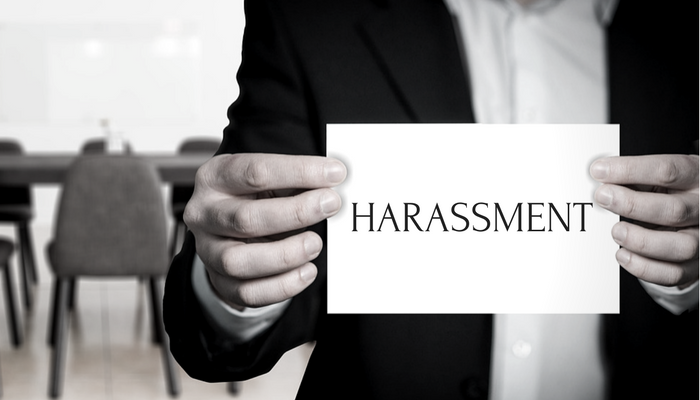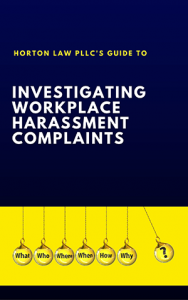As the year comes to a close, I thought I would review the New York Management Law Blog’s top posts of 2017.
These posts reflect some topics that most interested New York employers in 2017. Do they also suggest what will be top of mind in 2018?
New York Minimum Wage Increases on 12/31/17
This post reminded New York employers of the scheduled increases to both minimum wage and the salary threshold for overtime exemptions under state law.
If you haven’t already checked whether your company is paying enough, act fast! If you’re reading this, new requirements are already in place.
For those looking ahead, this post contains full charts of all scheduled increases to New York minimum wage and overtime exemption salary requirements. This includes increases taking effect on December 31st of 2018, 2019, 2020, and beyond.
New York Paid Family Leave
The New York Paid Family Leave Program kicks off on January 1, 2018. Companies throughout the state have spent much of 2017 preparing for this significant change in New York employment law. As a result, 3 of our 10 top posts of 2017 addressed this topic.
New York Paid Family Leave Notice Requirements
If you still haven’t determined what the employer and employee notice requirements are, then don’t wait any longer.
There are several things all covered employers must do beginning January 1, 2018, including:
- Post a Notice Confirming Coverage
- Provide Written Guidance to Employees
- Provide a Notice of Rights When Employees Request Leave
If you still have questions about the New York Paid Family Leave Program, check out these two top posts that include replays of webinars I presented on the topic:
In Case You Missed It: New York Paid Family Leave Webinar 9-12-17
I presented this webinar in September. It addresses many of the paid family leave basics. If you still don’t know whether your organization is covered or what it means if you are, start here.
Are You Ready for New York Paid Family Leave? (Webinar)
This more recent webinar gets into some of the latest details about what employers need to know to comply with the New York Paid Family Leave Benefits Law.
This webinar will help you get your written policy in place and prepare you for administering paid family leave in 2018.
Who Will Get the Last Seat on the NLRB?
In his first year in office, President Trump appointed two new members to the National Labor Relations Board: Marvin Kaplan and William Emanuel. Both are Republicans, which temporarily gave the 5-member Board a 3-2 Republican majority. Chaired by Philip Miscimarra (R), the NLRB reversed several key Obama-era precedents in December.
However, Chairman Miscimarra’s term ended on December 16, 2017, creating a new vacancy. President Trump named Kaplan the new Chairman, but has not yet formally nominated a new member to fill the Board.
Two names surfaced over the past several months as potential Miscimarra replacements. Our top posts of 2017 featured both of these individuals:
Report: Attorney John Ring May Replace Miscimarra on NLRB
Although Trump has not made his selection official, it now appears that Ring will be the pick in early 2018. A Republican management-side labor and employment lawyer, Ring will likely join Chairman Kaplan and Member Emanuel in continuing to move away from the Obama NLRB’s pro-union decisions.
5 Best Reasons for Anti-Harassment Training
2017 brought to light an extensive pattern of sexual harassment and assault by powerful men in the entertainment industry. This placed a spotlight on employers’ duties to prevent and remedy harassment in the workplace.
If your organization is still not sure where to start, this top post of 2017 is for you.
What Employers Didn’t Know About Existing New York Labor Laws
The 3 remaining top posts of 2017 shed light on several legal issues that were not new this year. This follows the blog’s purpose of providing useful information even about topics that are not being discussed elsewhere. Posts like these are another reason you should sign up for my email newsletter so you don’t miss out on critical guidance that you didn’t even know you needed!
New York Law Protects Employees’ Off-Duty Conduct
Are you familiar with Section 201-d of the New York Labor Law? Well, for starters, it applies to all New York employers. Click above to find out more!
New York’s Shared Work Program Provides a Layoff Alternative
Many employers were interested in this post about a little-known aspect of New York’s unemployment insurance benefits program. Sometimes companies can reduce their employees’ hours while offsetting the lost wages with partial unemployment benefits. This arrangement can help employers who would otherwise have to lay off employees during slow periods and risk losing them to other jobs before business picks up.
Disciplining Public Employees in New York Under Civil Service Law Section 75
This was a top post of 2017 among public employers. This includes governmental entities such as counties, municipalities, school districts, and state agencies. If you work in one of these organizations and have a role in employee discipline, you may need to understand how Section 75 of the New York Civil Service Law works. Or, at least, you must make sure it doesn’t apply, then determine what other due process requirements you have to comply with instead.
Don’t Stop at the Top Posts of 2017!
I hope you find it helpful to look back at what happened last year, but you should also look forward. Please continue to follow the New York Management Law Blog in 2018.
The best way (in my opinion) to stay informed of the hottest topics in New York labor and employment law is to subscribe to my monthly email newsletter. It not only recaps my recent blog posts, but also announces upcoming complimentary webinars that help you manage the people in your organization.
See you in 2018!




You must be logged in to post a comment.